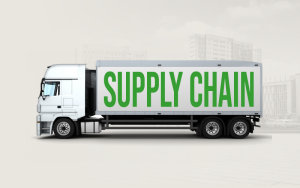Challenges Facing Supply Chain Today
Since the Covid-19 pandemic, the retail industry has changed for good. Sure, supply chain operations are constantly evolving, but it is safe to say that the pandemic put them to the test, causing disruptions that most brands were not accustomed to seeing.

In 2024, brands need to tackle some new challenges to stay relevant and thrive in the context of e-commerce and the proliferation of digitally native brands.
After a rough couple of years, the world slowly got back in order (in some ways) and changed for good in others. Amid port congestion, manufacturing delays, extreme weather events, and several other challenges the retail industry will face in 2024, some key trends have emerged that will impact companies' performances, big or small.
The rise of real-time insights
Regarding tech adoption, it is safe to say that the warehousing and logistics sectors have lagged behind other industries. Manual processes and outdated data-gathering systems are inaccurate and inefficient. They do not allow a clear overview of stock situations and pose a problem with supply-retailer communications.
Nowadays, the dynamics in the retail sector demand real-time problem-solving and accuracy regarding stock control and achieving customers' expectations. This means gathering real-time insights is necessary, providing businesses with a clear picture of inventory, planogram compliance, and customer satisfaction. Our crowdsourcing model poses a solution that delivers clarity, precision, and actionable insights anytime, anywhere you need them.

Changing consumer expectations
Seizing real-time insights is only part of the puzzle – consumer behaviors constantly change, so new demands and expectations always rise. Thus, the bar regarding customer experience is only getting higher.
Regarding supply chain management, companies must ensure agile operations, which can harness the potential of automation, allowing greater flexibility, optimizing processes, and easily handling accelerated demand.
Inventory management software is crucial for supply chain flexibility. From on-shelf stock status and promotional compliance to correct placement and usage of POS materials, SmartSpotter keeps you alerted to everything you need to know. Additionally, our dashboard and Shared Environment model enable better communication and joint actions between retailers and suppliers so your brand can always meet customer expectations.
This way, you can target effective, data-driven action to ensure retailer-supplier agreements are fulfilled.
The need for better forecasting tools
Forecast accuracy is essential in retail. Demand forecasting is when a brand develops an estimate of future customer demand. It includes analyzing internal and external factors that impact demand, such as market trends, competitors' behaviors, seasonality, promotions, and inventory levels. The goal is to use data insights that permit better forecast accuracy.
SmartSpotter's analytics empowers retailers with demand forecasting, providing them with AI-powered tools. Supply chain professionals can improve inventory decision-making based on real-time, accurate information, better understanding, planning, and predicting their products and operations.
Want to know more about SmartSpotter? Contact us!
